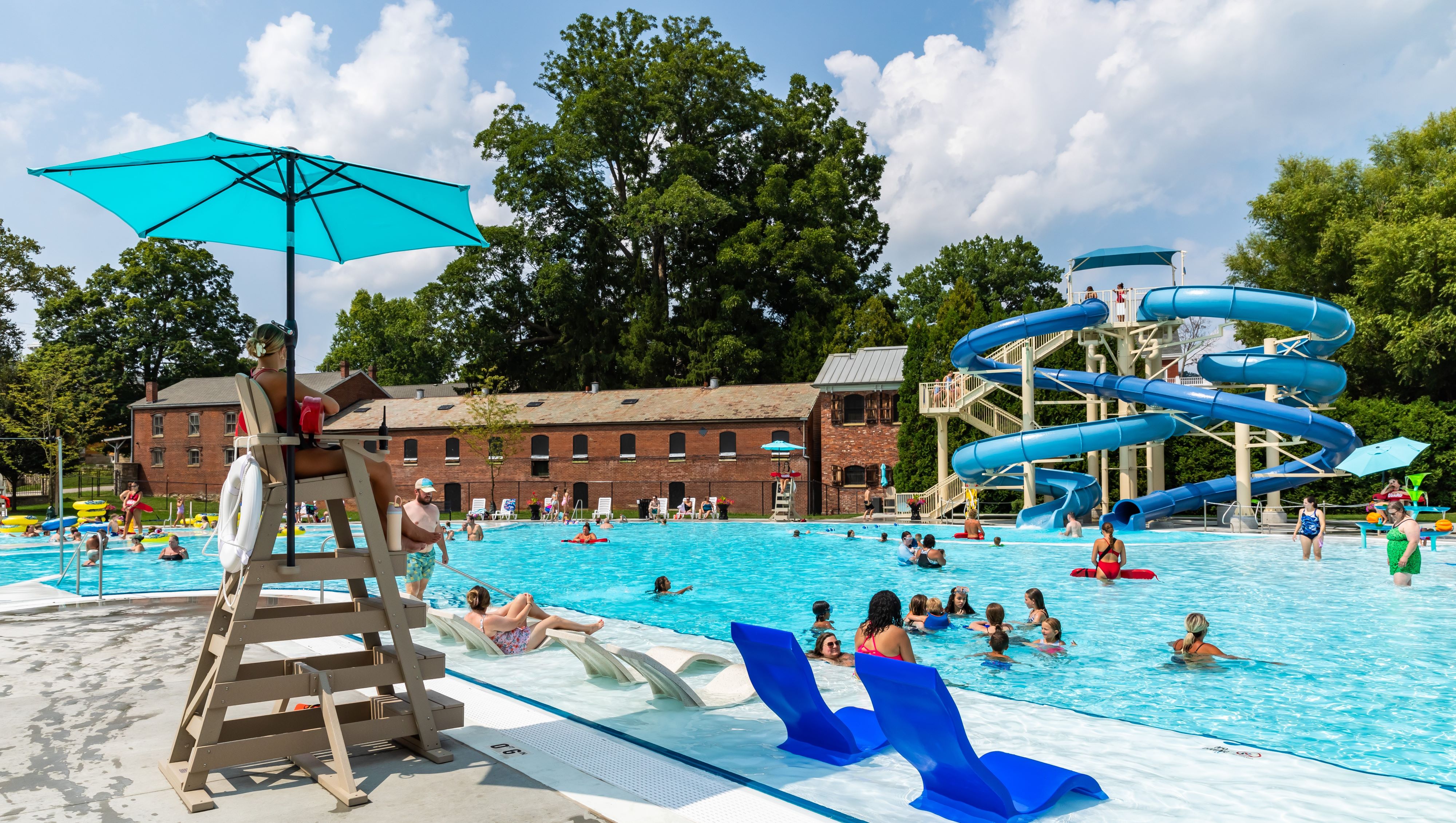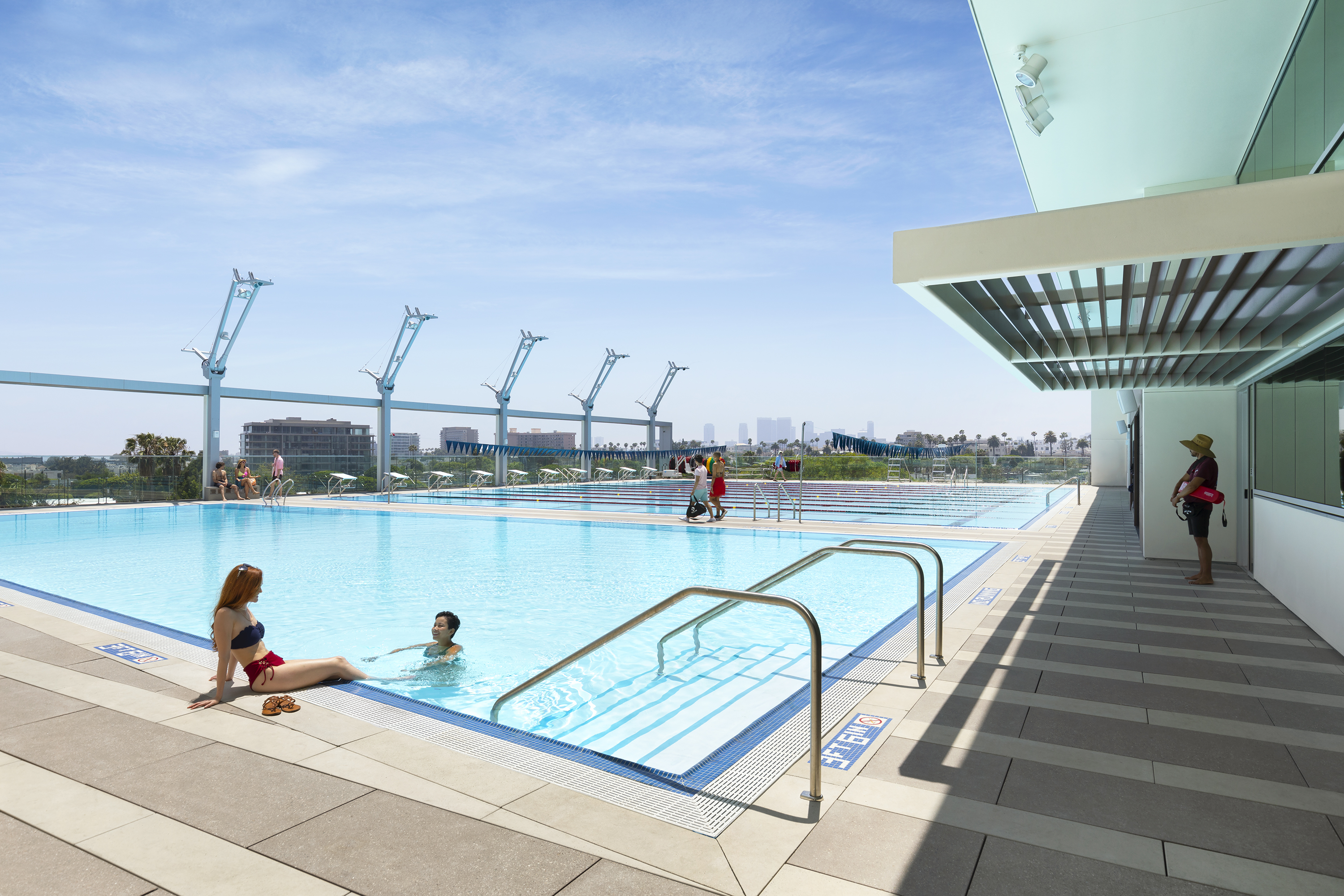Because it lies at the exact stylistic point where traditional meets contemporary. Because 76 dots of fiberoptic light twinkle in a seemingly random pattern on the floor. Because that pattern actually forms the star constellation from the client’s wedding night. Because not all stars shine with the same intensity, so some lights have 10 fiberoptic strands, while others have 25. Because the luxurious black glass mosaic tile on the floor adds a special glow all its own. Because the black granite edge is built to a 1/16-inch tolerance. Because it was constructed in 10 days. Because the equipment pad sits 150 feet away in a basement, so you hear the water’s movement, not the mechanisms behind it.
Time was the enemy.
Doug Hackl had spent a couple weeks working with landscape designer Gregory Lombardi to refine a driveway waterfeature. After developing the design concept, Lombardi looked to Hackl to help nail down the technical details and some materials choices. Now it was time to roll. Hackl and his crews had a mere 10 days to finish the fountain — from excavation to start-up.
Never mind that it was a total-perimeter overflow waterfeature with glass mosaic tile interior and 76 dots of fiberoptic light. It was going to be Thanksgiving, and the clients wanted to give their guests a grand entrance.
They were serious.
“The owner wanted a $2,500-a-day penalty if we didn’t get it completed in the 10-day allotment,” says Hackl, president of Hackl Pool Construction Co. in Lake Worth, Fla. “I told them that’s fine, but along the same lines, I wanted a $2,500-a-day additional bonus for early completion.” Clients and builder came to a mutual understanding, and the penalty clause was lifted.
It didn’t matter. Hackl knew he and his crews could pull it off, come rain or shine. He called in some favors from loyal suppliers, and he and his staff worked 10- to 12-hour days. And that Thursday in late November, the homeowners were able to show off more than their turkey-carving skills.
“We had to work around a bunch of other trades — electricians and landscapers and driveway people,” Hackl says. “It rained every other day. We’d put a tent up and keep working. We worked through the weekend, and somehow got it done in 10 days.”
Time played an important role in this water fountain, whether it was the chasing of time to meet the deadline or the documenting of history through the design and materials choices. Even an unexpected sentimental flourish reflected back on a time close to the customers’ hearts.
Bridging history
Time or, more specifically, bridging history became the main objective when Lombardi assessed the Palm Beach, Fla., estate. The clients had a contemporary house, but relics from an old garden reflected a different era.
“It had remnants of … a walled garden and a large Florentine wall fountain that was very grand,” says Lombardi, president of Gregory Lombardi Design Inc. in Cambridge, Mass.
The homeowners wanted to play off these classic elements. “The previous owner relocated the driveway to go through the older section of the property [so drivers could] gaze at some of these different features,” he adds.
Visitors view Spanish Colonial or Italianate touches such as carved stone archways and giant, old banyan trees before arriving at the house, where they find more contemporary landscaping to match the dwelling.
The new waterfeature’s driveway location would physically link the two parts of the property, so Lombardi needed to visually bridge the two stylistic eras.
They decided to combine modern technology with classic forms. An 8-by-24-foot, rectangular structure with a row of palm trees on either side would show the discipline and symmetry of classic architecture. Raising it out of the ground would give it a more modern, three-dimensional effect. And having it spill all around would add a sense of mystery, Lombardi thought. “You’ll know that it’s water, but it’s treated in a very non-traditional way,” he says.
The architects wanted black finishes to make the pool more reflective. “It would reflect things like the front door, the sunrise behind the house or the sunset,” Lombardi says. “It can go from being this mysterious black box to being something that has clouds in it to [showing] the entrance shimmering across the water at night.” So they decided to blanket the basin’s interior and edge with black glass mosaic tile.
When Hackl came on the job, he helped refine the concept further. He outfitted the pool with a slot gutter opening rather than a grate. Because the driveway and some of the older garden elements featured stone, he decided black granite made more sense for the fountain edge and the facing on the edge wall. “The black granite gives it a lot richer, cleaner look,” Hackl says.
Plus, his crews could install the 8-foot-long pieces of granite to the edge much faster. The edge had to be built within a 1/16-inch tolerance. To install the tiny tiles and get a true edge would have added an entire week between prep work and tile installation, Hackl estimates. So he and Lombardi chose to keep the tile inside.
Luckily, he had a good supplier on hand to help move the project along. “We had access to a granite marble fabricator that worked into the wee hours fabricating all the pieces for us,” Hackl says.
He also suggested adding laminar fountains on either side of the pool, which shoot arcs from the landscaping to the pool. “We threw in the laminar jets to give it a totally different look and to give it some noise,” Hackl says. Here was another case where a classic form (the arc) met modern technology: The jets keep the streams free of air so they look like glass.
Close to the heart
What started out as a not-so-simple design enhancement came to symbolize an important point in the clients’ personal history.
Lombardi wanted to add a shimmering effect inside the pool: a blanket of randomly placed tiny lights on the bottom to glitter at night. He says it was to be “like taking a very uniform plane and then sprinkling it with dots of light so it’s like the night sky.” With that in mind, he suggested that the lights mimic a constellation of stars on a specific night.
That’s when the fountain took on its sentimental value. “We tried to find a date that was meaningful,” Lombardi says. “So we wanted constellations that were in the sky in Palm Beach the night that they got married. They liked that connection. It was more of a symbolic piece for them.”
Lombardi’s staff did the research to find what the night sky looked like on that day. It took 76 dots to create the constellations they wanted. To show the varying brightness of the stars, Hackl suggested using two brightnesses — one with 10 strands, another with 25. He wanted the fiberoptics to be as accessible as possible in case any of the lights needed repair. So he gave each of the lights its own 1/2-inch conduit.
Everyone wants the “wow” factor, and this waterfeature has it. But the story behind its unique lighting is enough to elicit a sustained, heartfelt “Ahhhh.”
“They entertain quite a lot,” Lombardi says. “So it’s something to share with guests — a little anecdote.”



